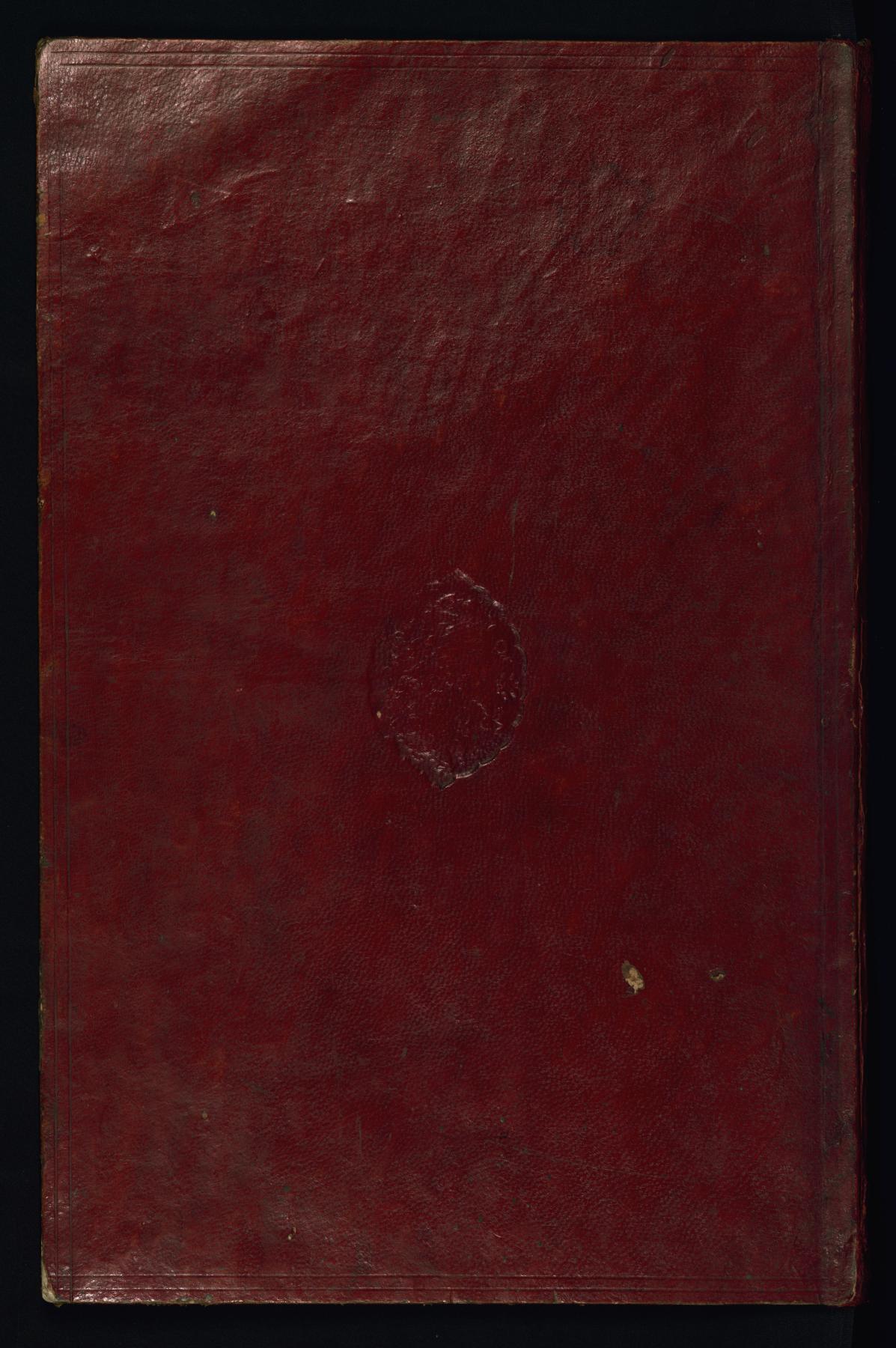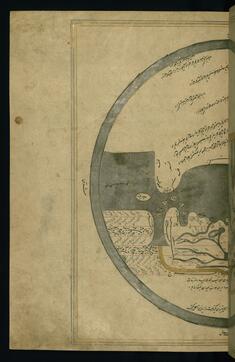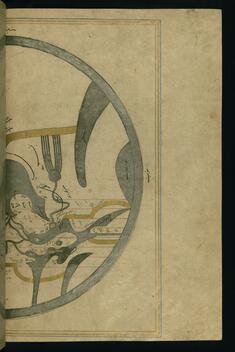Wonders of Creation
(Manuscripts and Rare Books, Islamic World , Islamic Manuscripts)
Walters manuscript W.593 is an illuminated and illustrated copy of a Persian version of the famous 'Aja'ib al-makhluqat (Wonders of creation) by Zakariya' al-Qazwini (died 682 AH/AD 1283), composed by Shams al-Din Muhammad al-Tusi (active 6th century AH/AD 12th). The text, in black Nasta'liq script, may have been written by an Iranian scribe in the 10th century AH/AD 16th in Ottoman Turkey. It opens with an illuminated medallion inscribed with the author's name (fol. 1a), followed by a double-page illuminated incipit (fols. 1b-2a). The text is illustrated with 181 paintings of different sizes that offer an interesting iconography for Tusi manuscripts. The red leather binding is not contemporary with the manuscript and probably dates to the 13th century AH/AD 19th.
Provenance
Provenance (from the French provenir, 'to come from/forth') is the chronology of the ownership, custody, or location of a historical object. Learn more about provenance at the Walters.
Henry Walters, Baltimore [date and mode of acquisition unknown] [ex libris on upper board inside]; Walters Art Museum, 1931, by bequest.
Exhibitions
| 2010-2011 | Beasts on Parchment: Picturing Animals in Medieval Manuscripts. The Walters Art Museum, Baltimore. |
| 2007-2008 | Maps: Finding Our Place in the World. The Field Museum, Chicago; The Walters Art Museum, Baltimore. |
| 2001-2002 | Expanding World Views: A Millennium of Maps. The Walters Art Museum, Baltimore. |
| 1981 | A Salute to the Aquarium. The Walters Art Gallery, Baltimore. |
Geographies
Turkey (Place of Origin)
Measurements
Folio: 14 3/16 x 9 1/2 in. (36.1 x 24.1 cm)
Credit Line
Acquired by Henry Walters
Location in Museum
Accession Number
In libraries, galleries, museums, and archives, an accession number is a unique identifier assigned to each object in the collection.
In libraries, galleries, museums, and archives, an accession number is a unique identifier assigned to each object in the collection.
W.593





